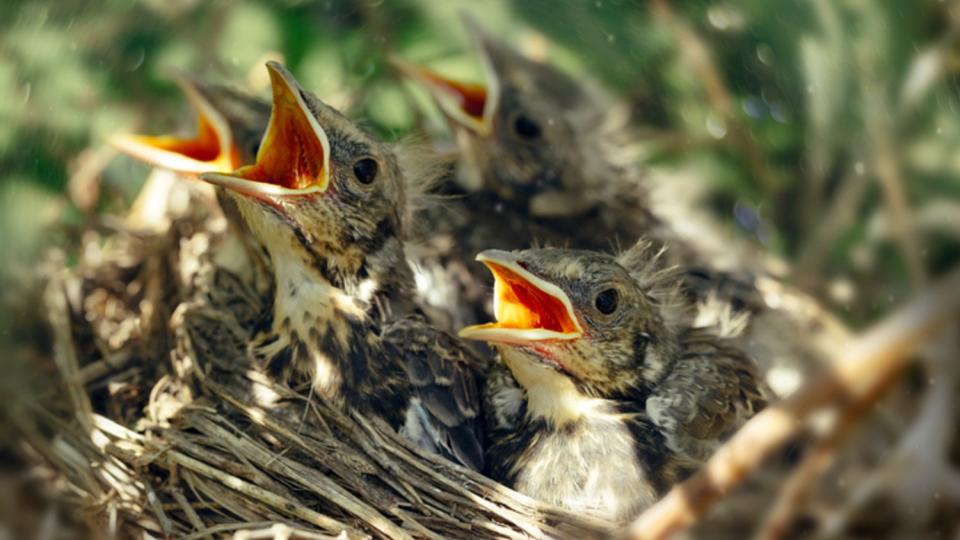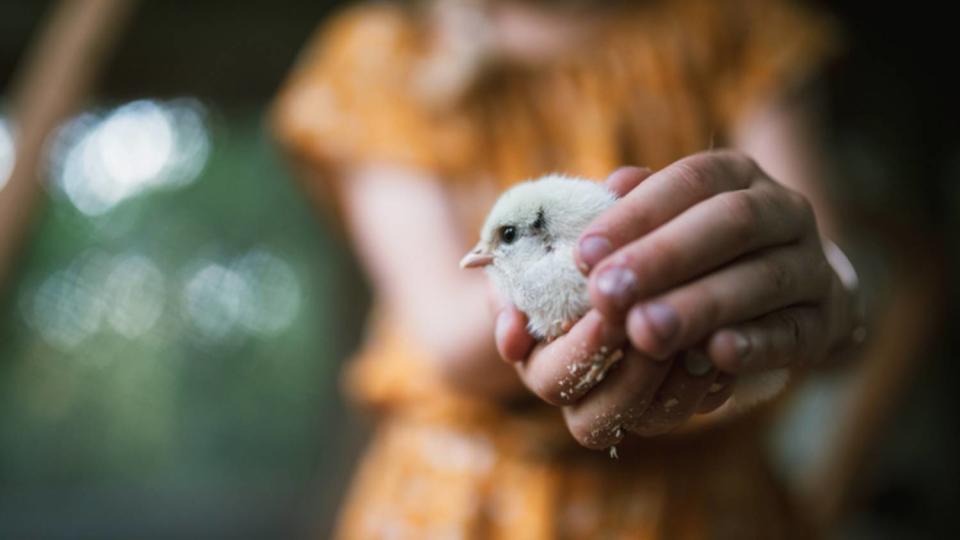What to feed a baby bird: A vet's guide to caring for a fledgling

Finding a young fledgling can be distressing and your natural instinct may be to immediately look after it. At this stage, you're likely asking what to feed a baby bird and pondering your next steps. You may even be looking to return the fledgling back to its parents, but you're unsure how to do so without causing harm.
Here, veterinarian Dr Joanna Woodnutt MRCVS is on hand to offer advice for such a situation, having been regularly asked to help with nestling, fledgling or injured baby birds as part of her job. As you'll discover, the decision to rescue and nurture a young bird isn't always clear cut and feeding is quite tricky. It's not a matter of satiating hunger using the best bird feeder, that's for sure!
Before reading on, however, you need to assess whether a bird actually appears vulnerable. The RSPB has asked the public to be wary of simply picking up seemingly abandoned birds, saying it's normal for them to be flightless at first – in many cases, they have not been deserted. But, assuming a bird is vulnerable, Dr Woodnutt is ready to tell you all you need to know in her guide to caring for a fledgling.
What to do with a baby bird
If you’ve found a baby bird on the floor, or one has been brought in by your cat, the first thing to do is get it to a safe place. Gently pick it up – you can use a tea towel if you’d rather not touch it – and put it into a box. Any sort of box with a lid that’s large enough will work – you don’t need to make it perfect, just get it contained and in the dark whilst you work out what to do next. Try to have a peek at it as you lift it. Is it injured? Is there any blood?
Now, you need to decide if you’ve rescued a nestling or a fledgling. By far the most common rescues are fledglings. These young birds are just learning to fly, so they spend a lot of time on the ground. This means you’re more likely to spot them, and they’re more at risk of being caught by the cat!
Fledglings have most or all of their feathers, but might not look as neat as an adult bird. If the baby bird is a fledgling, you can leave him where you found him if it’s safe, or place the box, open and on its side, under a bush, or hanging from a branch so he can hide until he’s ready to try flying again. His parents will be nearby, waiting to feed him. Keep pets inside if possible to give him a fair chance!
A nestling, on the other hand, will have no feathers. He’ll likely have fallen out of his nest, and you may find more than one baby bird, or even a whole nest on the ground. Have a look for the nest – if you can see it, pop him back in there and leave him – his parents will carry on feeding him. If the nest is on the ground, prop it up high or – even better – wire it into the bush or tree it fell from so that it’s safe from predators. If you can’t see it, or it’s damaged, try using a plant pot with some nest material, and wire it to a bush.
If you can’t return the baby bird to his parents, or you’ve tried but have seen no sign of them after continuous watching of two or more hours, you may have to consider hand-rearing the bird.
Should I look after this baby bird?

Hopefully you’ve tried to return the bird to his parents – hand rearing is hard work, and nowhere near as rewarding as they make it sound in books. Feeding needs to happen frequently – as often as every 20 minutes – during daylight hours, so this is a big responsibility. Most people don’t have the equipment and experience necessary, so taking in a bird should be a last resort.
Hand reared birds struggle to survive in the wild and are unlikely to ever live a normal life unless they’ve been reared by a professional. It’s also extremely common for baby birds to die from stress, incorrect diet, or undiagnosed injury or illness – so be prepared. Lastly, you’ll need to check your local law. In some areas, it’s illegal to keep wildlife captive unless you have a license, or it may be illegal to release the bird again once you’ve brought it into the house.
If you’re sure the bird has been abandoned, the best option is to see if there’s a nearby wildlife rescue or shelter that will take the bird, as this will give the bird the best chance of being safely released. If this isn’t possible, see if they can tell you what species of bird it is and give you any advice or equipment.
How do you take care of an abandoned baby bird?

If you can’t find anybody else to take the bird and you really want to give it a shot, it’s time to find out how to take care of an abandoned baby bird. Here’s all you need to know:
Housing an abandoned baby bird
You’ll need to find somewhere suitable for the baby bird to live until it’s old enough to be released. For a fledgling, this is easy – they’re already out of the nest so you just need to provide a safe space in the garden that they can escape when they’re ready.
For a nestling, you’ll need a box lined with something non-slip easy to clean – birds are messy! Don’t forget that the box should be pet-proof! They’ll also need a ‘nest’, as this supports their weight and allows normal development of their bones. Place the box in a quiet place. It’s best not to use a heat lamp unless it’s very cold, as a nestling will be unable to move away if they’re too hot.
What to feed a baby bird that fell out of its nest
If your bird is a nestling, you’ll need to feed from a syringe or pipette. These birds would be being fed regurgitated food from mum and dad, so they’ll need a soft food. A common option is a mix of cat/dog food, hardboiled eggs, and crushed mealworms, but your wildlife rehabber will be able to give you a more exact recipe designed for the age and species of the bird. You’ll need to find out how to make the baby bird food, how long it can stay in the fridge for, and how often to feed the baby bird.
If you’re wondering what to feed a fledgling baby bird, don’t worry – this is much easier! Fledglings will still be being fed by their parents, but they’re picking up many of the skills they need to feed themselves. First, try offering a bird food mix of seeds and mealworms, and see if the bird helps himself. If he does, great! If not, you’ll need to find out what sort of bird he is, and feed him his preferred food – often softened mealworms – from a pair of tweezers until he’s a little older.
Can you give baby birds water?

It’s very important that birds don’t get dehydrated, but it’s difficult to safely give water to a baby bird. Nestlings should not be given water – they won’t know what to do with it and might drown in it. Both nestlings and fledglings that are not yet feeding themselves will get their water from their diet – so they’ll need access to moist foods. Fledglings that can feed themselves can be given a shallow dish of water until they recover from their shock and fly away.
Knowing what to do with a baby bird that’s been abandoned is tough. Whilst our instinct is to rescue and look after them, it’s generally not in the bird’s best interests – they’re better off outside and rarely do well when hand reared.
If you do end up feeding a baby bird, take as much advice as possible from an experienced bird rehabilitation centre to maximise the chances of a successful release.